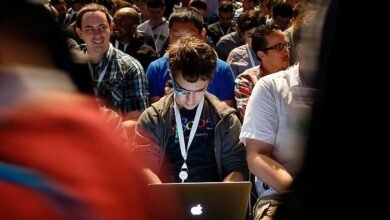VA Tech software simulates nationwide impact of alternative fuels for freight trains

What would happen if freight trains across the U.S. got on track to transition away from diesel?
Researchers at the Virginia Tech Transportation Institute (VTTI) recently created a nationwide multi-train simulation software called NeTrainSim to better illustrate exactly this situation.
The open-source model ran multiple simulations of a national freight train network powered by alternative fuel sources, including electricity, biodiesel, hydrogen, and hybrids. The results are perhaps the first comparative analysis of an industry-wide shift away from diesel.
“We have solid results quantifying the savings of transitioning freight trains to electricity and other alternative fuel sources across the United States,” said Hesham Raka, director of VTTI’s Center for Sustainable Mobility. . “And this tool is now available for others to use. Anyone can operate on any rail network they like.”
An alpha version of NeTrainSim is available for download, and the team’s findings were recently published in the academic journal Applied Energy.
Compared to current diesel-dependent networks, NeTrainSim results show that:
- The electric powertrain is the most efficient, reducing energy consumption by 56%.
- Biodiesel and biodiesel hybrid reduced carbon dioxide emissions by 6% and 21%, respectively, and diesel hybrid technology reduced carbon dioxide emissions by 16%.
- Hydrogen fuel cell technology has shown a 15% reduction in energy consumption without emitting carbon dioxide.
Both the tool and information were presented at the Transportation Research Board’s annual meeting in January. Part of the National Academies of Sciences, Engineering, and Medicine, the week-long event in Washington, D.C., brings together policy makers, government representatives, industry experts, and academic institutions.
“NeTrainSim is more than just a train simulator, it is a comprehensive and innovative tool that pushes the boundaries of train simulation and provides valuable insights into the future of train technology,” said Ahmed, a graduate student researcher who will be involved in the project.・Mr. Aleda stated. meeting. “What I most want participants to learn is this pioneering spirit and practical application.”
In addition to Aleda, Raka’s research team also includes VTTI senior researcher Jainhe Du. George List, Professor, Department of Civil, Construction, and Environmental Engineering, North Carolina State University. Andreas Hofrichter, Principal Consultant at Deutsche Bahn ECO. Yue Cao is an assistant professor of electrical engineering and computer science at Oregon State University.
The multi-train network simulation is one of five tools created as part of a large multi-university and multi-team project, Enabling Sustainable Train Energy Pathways. This project, funded by the U.S. Department of Energy, is focused on decarbonizing the freight rail industry and has created some of the first cutting-edge open source tools to assess variables related to that effort. The goal is to.
Rist, who was the lead researcher on the large-scale project, said Raka’s simulator added a real-world situation in which trains need to interact with each other on the tracks.
“Railroads are different from highways in that they have trains coming and going. They’re more like highway work zones,” List said. “What Hesham’s software solves is this meet-and-greet problem. It’s a big problem because even if trains have crew change points, it’s difficult to stop a train and you have to consider energy consumption. is.”
Other features that make the simulation stand out include:
- Ability to simulate extensive, multiple-intersecting corridor networks at country and city scales
- A train tracking algorithm is used to track all trains at user-specified intervals (e.g., every second) to maximize the accuracy of energy estimation.
- Ability to calculate maximum acceleration considering forces acting on the train and model driver behavior under different conditions
- Ability to model current and future powertrain technologies
To ensure that the network simulations were realistically depicted, Rakha’s team used diesel consumption statistics for national freight trains running the same network in real life, running on diesel. Benchmarked all train simulations.
“It was just a 0.9% difference,” Laca said. “So we feel pretty comfortable that our results are well benchmarked against real-world empirical data from the United States.”
The focus of the VTTI model was to measure the efficiency of a train’s tanks or engines. This means additional research will be needed to assess the impact of factors such as battery life and the technology used to generate the electricity needed to power the trains. . But Raka believes the simulation provides enough information to motivate others towards decarbonisation.
“This result motivates us to move forward in that direction,” Raka said. “I think policymakers can use these results as a way to request funding for that.”
Raka is also the Charles E. Via Jr. Samuel Reynolds Pritchard Professor of Engineering in the Department of Civil and Environmental Engineering and a Distinguished Professor in the Bradley Department of Electrical and Computer Engineering.
Aredah is a graduate student studying civil and environmental engineering as well as computer science.
travis williams
Source link




